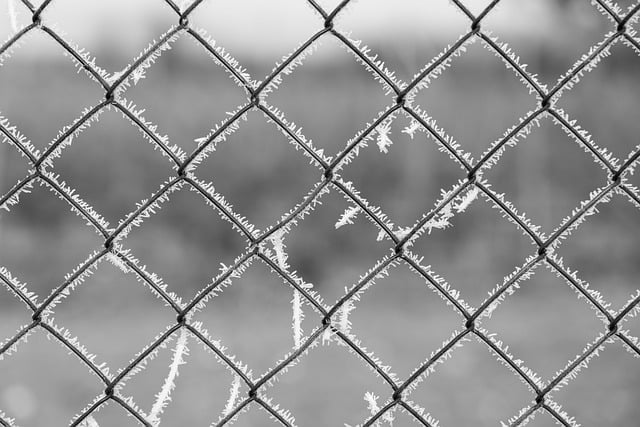In coastal regions, where harsh weather conditions and salt air pose unique challenges, durable wooden fencing is an attractive and sustainable solution. This article explores the intricacies of selecting and maintaining robust wood fences designed to withstand the rigors of the coastline. We’ll delve into the benefits of specific wood species, installation best practices, and design elements that enhance both functionality and aesthetic appeal. By understanding these aspects, homeowners can invest in a long-lasting barrier that protects their properties and complements their coastal landscapes.
- Understanding Coastal Fencing Challenges
- Advantages of Durable Wooden Fencing
- Choosing the Right Wood Species
- Maintenance Tips for Longevity
- Design Options for Esthetic Appeal
- Installation Considerations for Coastlines
Understanding Coastal Fencing Challenges
Coastal areas present unique challenges for fencing due to their harsh environments. Salt air, strong winds, and constant exposure to moisture can quickly deteriorate conventional materials. Traditional wooden fences often struggle to withstand these conditions, leading to frequent repairs or replacements. The challenge lies in selecting a fencing material that not only endures but also enhances the natural beauty of the coastal landscape.
Durable wooden fencing for these regions requires specialized treatments and construction techniques. Using treated timber with high-quality preservatives can significantly extend its lifespan. Crafting these fences with sturdy, weather-resistant joints and secure installations is crucial to ensure they can resist the intense coastal conditions without compromising aesthetics.
Advantages of Durable Wooden Fencing
Durable wooden fencing offers an attractive and natural barrier for coastal areas, blending seamlessly with the surrounding landscape. One of its key advantages is its ability to withstand harsh weather conditions, including strong winds and salty air, which makes it a reliable choice for coastal properties. This type of fencing is also low-maintenance, requiring minimal cleaning and treatment compared to other materials.
Additionally, wooden fencing provides privacy and security without losing the aesthetic appeal of natural wood. Its versatility allows for custom designs, catering to various architectural styles and individual preferences. Moreover, installing durable wooden fencing can increase property value, providing both functional and visual benefits that enhance the overall coastal lifestyle.
Choosing the Right Wood Species
When selecting wood for coastal fencing, choosing the right species is paramount to ensure durability and longevity. Softwoods like cedar and redwood are popular choices due to their natural resistance to rot and insects, making them ideal for harsh marine environments. These woods have a high oil content that repels water, preventing moisture-related damage.
Each species has unique characteristics. For instance, cedar is known for its beauty and ability to maintain its integrity in humid conditions. Redwood, on the other hand, offers exceptional strength and can withstand extreme weather conditions. Considering factors like local availability, budget, and aesthetic preferences will further guide your decision in selecting the perfect wood species for your coastal fencing project.
Maintenance Tips for Longevity
To ensure your durable wooden fencing stands strong against coastal elements, regular maintenance is key. Start by cleaning the fence twice a year with a pressure washer to remove any buildup of salt, sand, or algae. This prevents damage and keeps the wood looking its best. After cleaning, apply a fresh coat of high-quality water-repellent sealer every 2-3 years. This protective layer shields the wood from moisture, preventing rot and warping.
Inspect your fence regularly for any signs of wear and tear, such as loose or missing boards, damaged posts, or peeling paint. Promptly repair these issues to avoid further deterioration. During severe storms or high winds, take extra precautions to secure the fence. Consider adding braces or reinforcing brackets to strengthen its structure against intense coastal conditions.
Design Options for Esthetic Appeal
When considering fencing for coastal areas, design options that enhance aesthetic appeal are paramount. Wooden fences in these regions must not only withstand harsh weather conditions but also complement the surrounding environment. A variety of styles and finishes can achieve this balance between durability and beauty. For instance, traditional post-and-rail fences with a natural wood finish can blend seamlessly into coastal landscapes, while more modern vertical slat fences painted in ocean-inspired colors add a touch of contemporary charm.
Customized designs, such as intricate carved patterns or unique latticework, offer endless possibilities for personalization. These artistic elements not only elevate the visual appeal but also serve as functional features, providing privacy and security without compromising the coastal ambiance. Incorporating local wood species known for their durability, like cedar or redwood, ensures that these fences not only look stunning but also stand the test of time in challenging coastal conditions.
Installation Considerations for Coastlines
When installing durable wooden fencing in coastal areas, several unique considerations come into play due to the region’s harsh marine environment. First, it’s crucial to select a wood species known for its natural resistance to rot and moisture, such as treated cedar or redwood. These woods have long been standard choices for outdoor applications precisely because of their durability.
The location of the fence along the coastline also influences installation methods. In areas prone to strong winds and high tides, fencing should be securely anchored to robust posts set deep into the ground. Additionally, extra reinforcement at points where the fence meets gates or other structures is essential to withstand constant exposure to salt air and water. Proper drainage is another critical aspect; ensuring water doesn’t pool around the fence can significantly extend its life.
